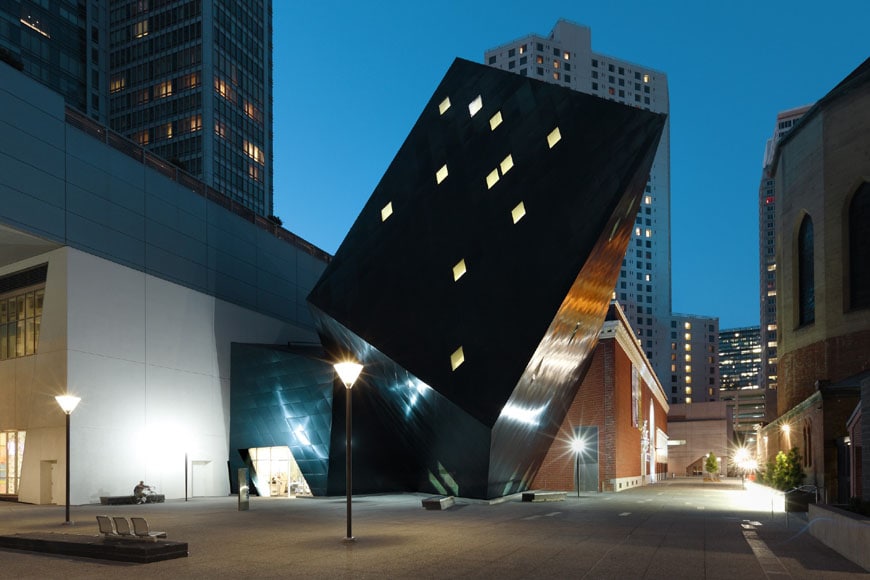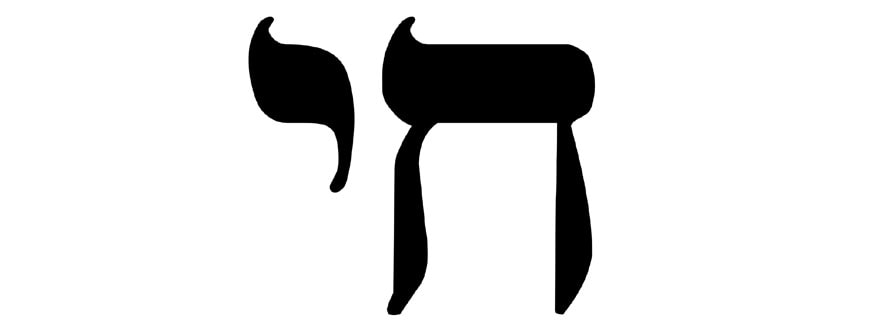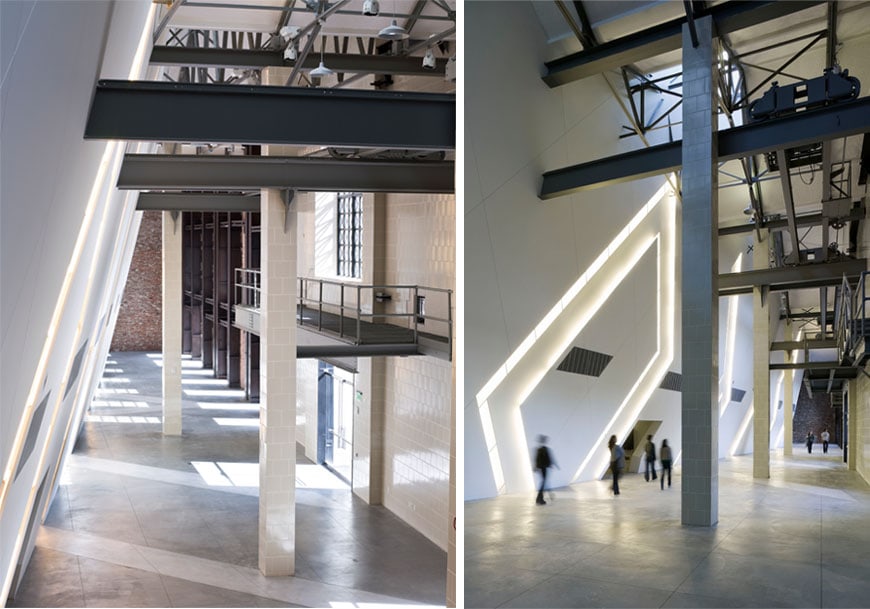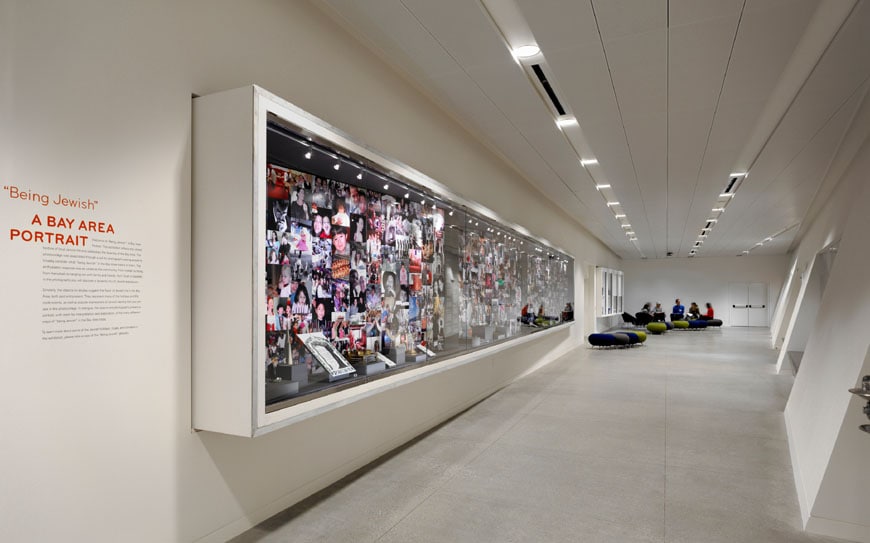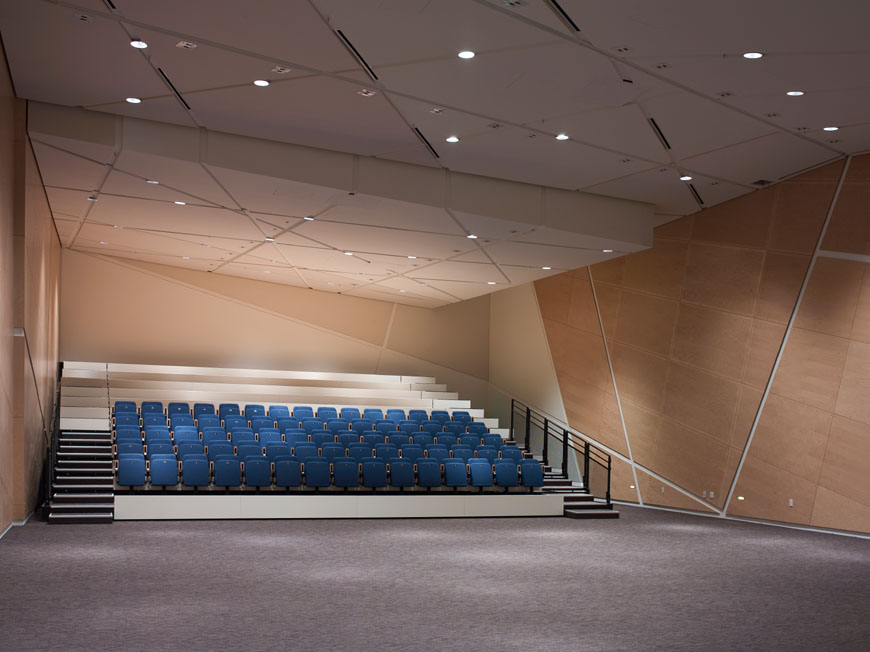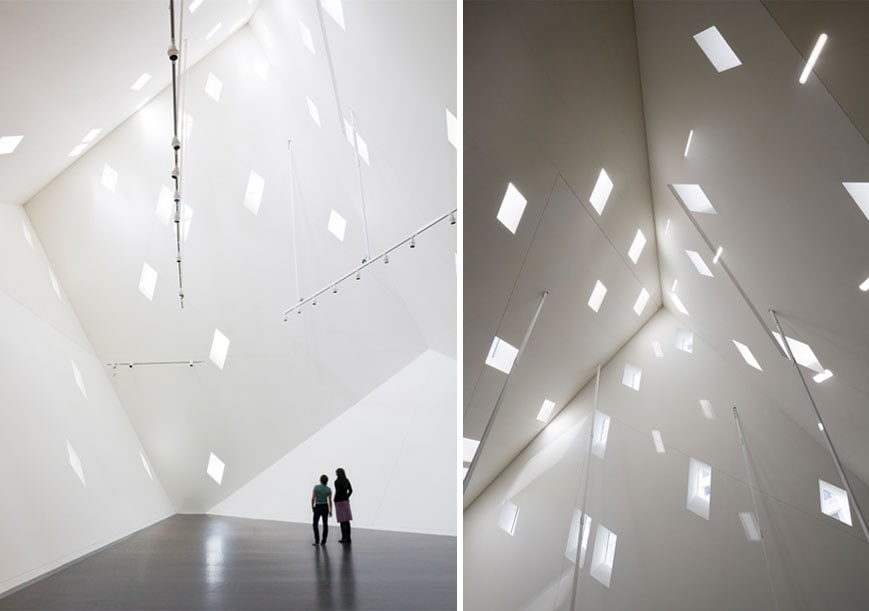Daniel Libeskind – the CJM museum in San Francisco
Client: Contemporary Jewish Museum
Structural engineers: ARUP and OLMM
Facade: A. Zahner company
Images courtesy of the Contemporary Jewish Museum
For detailed credits see captions
San Francisco | The Architecture of the Contemporary Jewish Museum by Daniel Libeskind
Introduction
The Contemporary Jewish Museum (CJM) in San Francisco presents an original approach to what a “Jewish Museum” could be. It is not a “classic” museum focusing on history, traditions, heritage, and culture mostly dating to a more or less recent past, but a non-collecting institution dedicated instead to the creativity of Jewish artists in the 21st century.
This dynamic vision of the relationship between tradition and innovation, between legacy and invention, is perfectly embodied in the CJM building itself, one of the most intriguing designs by the studio led by Daniel Libeskind.
Indeed, the home of the CJM in downtown San Francisco is composed of both an early-20th-century listed building, a former power substation, and a contemporary expansion. As common for many projects by Libeskind, the CJM building architecture is strongly linked to symbolic meanings and references.
Above: The Contemporary Jewish Museum San Francisco, exterior view at night from Yerba Buena Lane, photo © Bitterbredt, courtesy of CJM
The CJM museum entrance viewed from Jessie Square, photo © Bruce Damonte, courtesy of CJM
The “yud”, exterior view from Yerba Buena Lane, photo © Bruce Damonte, courtesy of CJM
“Chai, chet, and yud”
Thus, the museum design is based on a precise Hebrew world made by letters that, for the Jewish tradition, are not mere signs but actual creative forces. The word chosen by Libeskind as a conceptual and formal reference is “L’ Chaim“, a traditional Hebrew drinking toast meaning “To Life”.
“To life” both refer to the key role of the original power station in providing energy to the city after the 1906 earthquake, and to the museum’s mission of developing and pushing forward the Jewish culture in the context of the new millennium.
The Hebrew word “Chaim” is composed of the two letters chet and yud
Libeskind himself explains how he used the word Chai (Life), which is composed of the letters chet” (ח) and yud ( י), to give significance and shape to the museum building: the “chet” provides an overall continuity for the exhibition and educational spaces, and the “yud” with its 36 windows, serves as a special exhibition, performance and event space”. In essence, Libeskind’s design is a constant celebration of the dialogue between two elements: old and new, tradition and innovation, life and art.
The architecture of the CJM: creating a dialogue
As mentioned earlier, the 63,000-square-foot building of the museum, inaugurated in 2008, is composed of two visually distinct architectural bodies. The former power station is a rectangular block made of red bricks which accommodates the entrance lobby, a cafeteria, and an education center; an exhibition gallery and the auditorium are located in an adjacent wing on the ground floor.
The addition is an articulated geometry clad in blue stainless steel housing offices and activity rooms on the ground floor and special exhibition galleries on the first floor.
Contemporary Jewish Museum San Francisco – ground floor plan
Contemporary Jewish Museum San Francisco – second-floor level plan
Contemporary Jewish Museum San Francisco – longitudinal section
Again, “dialogue” is the keyword. The shining-blue addition is encased in the brick building like a crystal in rock; its aspect changes constantly, “reacting” to different light and weather conditions and the observer’s point of view. The museum interior alternates bright rooms filled with light like the entrance lobby with more intimate and dim-lighted spaces for the auditorium.
The entrance lobby is a double-height hall where Libeskind’s distinctive touch is evident in the faceted volumes that reveal the intersection of the old building and the new addition.
The Shenson Welcome Center at the CJM, photo © Bruce Damonte, Courtesy of CJM
The Grand Lobby at the CJM, photos: left © 2008 Mark Darley, right © Bruce Damonte
Sala Webb Education Center at the CJM, photo © Bruce Damonte, courtesy of CJM
The Goldman Auditorium, photo ©2008 Mark Darley, Courtesy of CJM
The special exhibition gallery on the first floor of the “yud” is certainly one of the most enthralling spaces of the Contemporary Jewish Museum: a tilted white box inside marked by 36 rhomboidal windows that, outside, stud the cross-hatching steel cladding. 36 is again a number with many references to Jewish culture, and probably Libeskind chose it as a multiple of 18, the number connected to Chai/Life in the Kabbalah.
The Yud special exhibition Gallery, interior views, photos: left ©2008 Mark Darley; right © Bruce Damonte
Detail of the blue stainless steel facade, photo © Bruce Damonte, courtesy of the CJM

The Contemporary Jewish Museum – CJM in San Francisco, California, is a non-collecting institution committed to promoting Jewish art and creativity
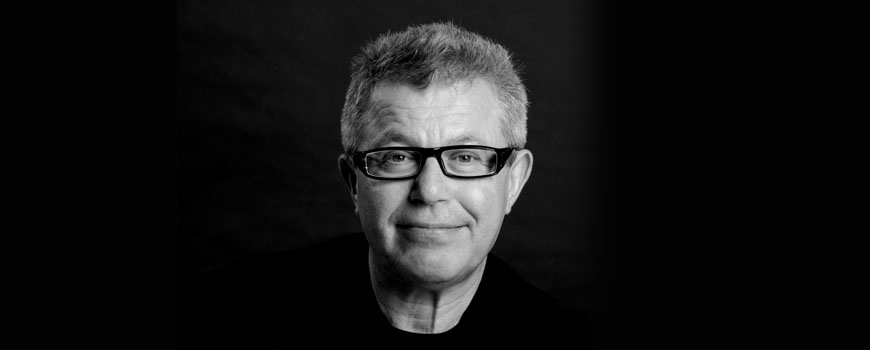
Daniel Libeskind
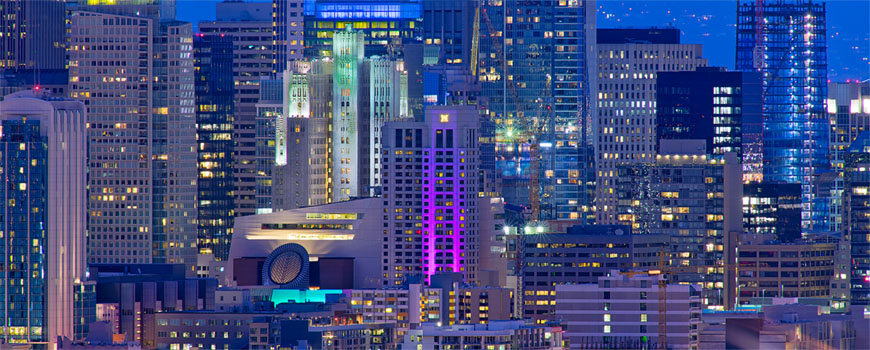
San Francisco
copyright Inexhibit 2024 - ISSN: 2283-5474

